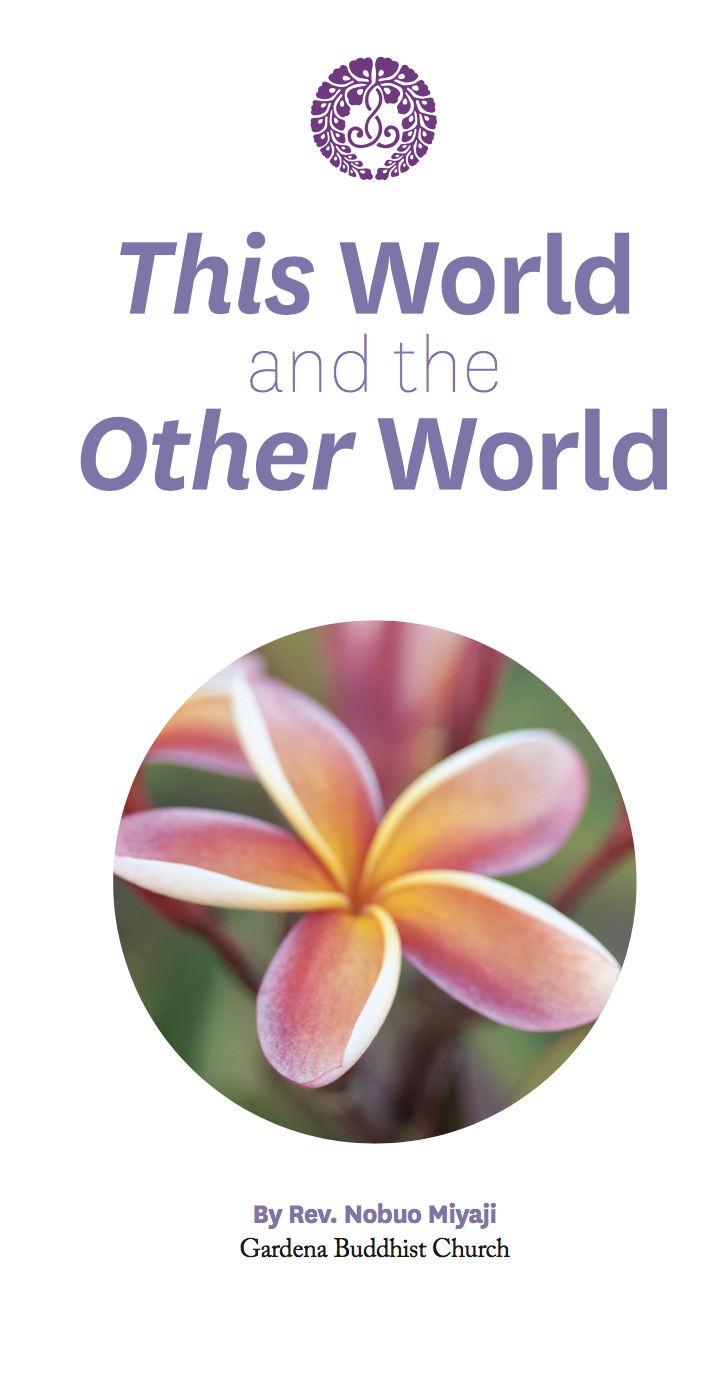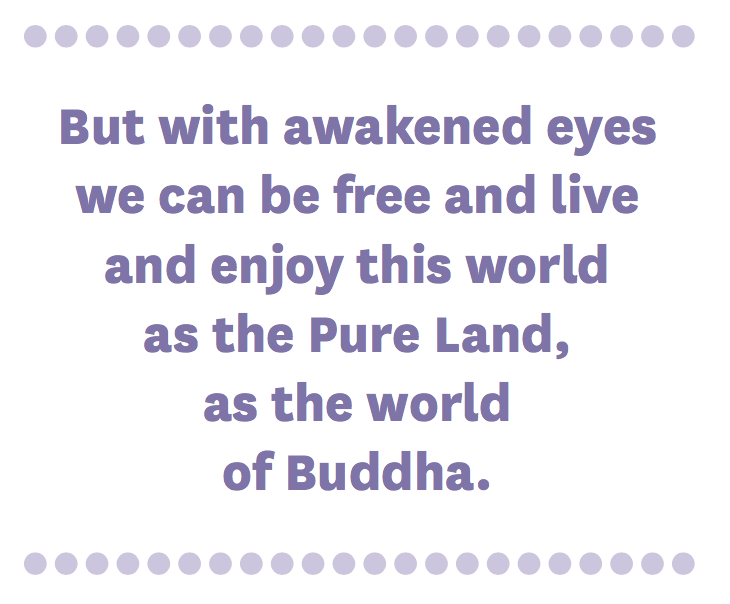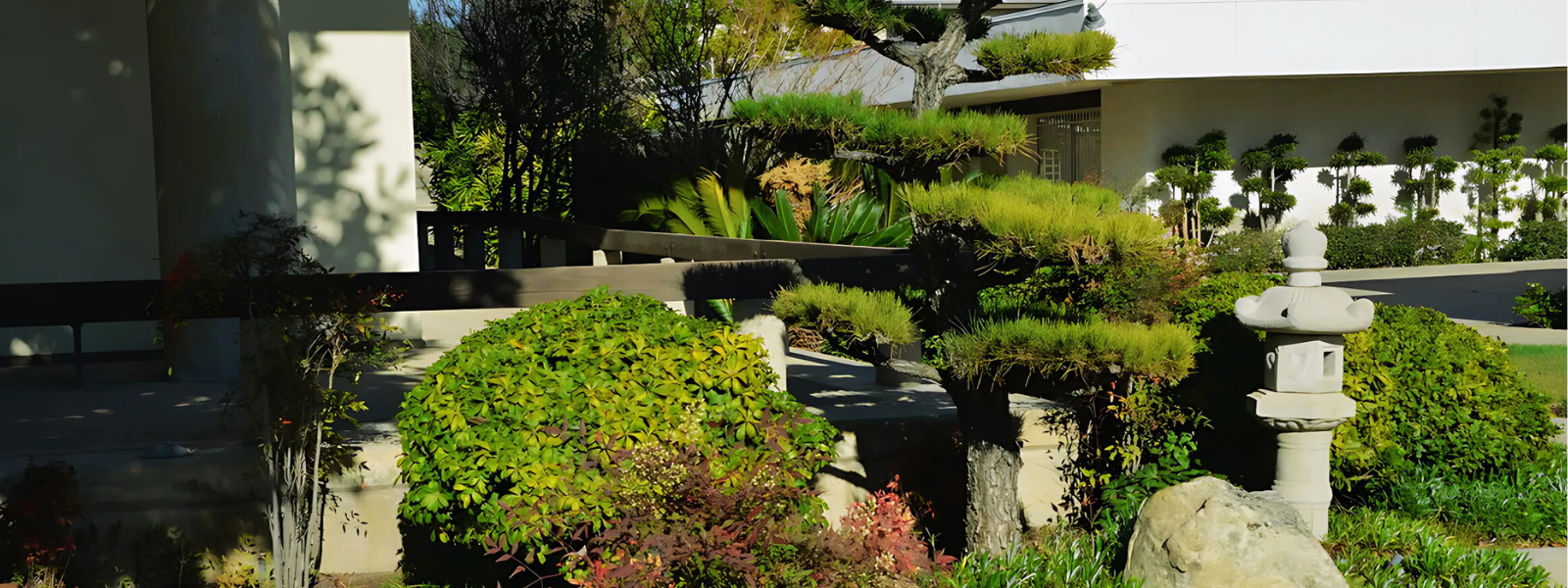This World and the Other World
 I would like to introduce an old Japanese genre of literature called Shinju-mono that focuses on stories of young couples who fall in love but are not allowed to marry each other. Because they are not allowed to marry each other, the couple chooses to commit suicide. These stories, however, usually end with the couple expecting and promising to marry each other in the “other world”, before they take their life.
I would like to introduce an old Japanese genre of literature called Shinju-mono that focuses on stories of young couples who fall in love but are not allowed to marry each other. Because they are not allowed to marry each other, the couple chooses to commit suicide. These stories, however, usually end with the couple expecting and promising to marry each other in the “other world”, before they take their life.
Like these stories, we believe that there are two worlds around us: this world, and the other world. This world means the world we are living in. The other world refers to the world where we will go after this world. This world exists now, and the other world does not. We will go to the other world after we die.
Many people believe in the world of ghosts. That world is described as a scary world. You might think that my essay is talking about this kind of scary world. But that is not the case. “Other world” simply means the world that is not “this world.” However, there are no two worlds around us. There are no two different worlds like the world of hell and the world of heaven. There is only one world, but it looks like there are two worlds co-existing.
Let’s take the example of a cup of water. For one person, it is something to wet their mouth or quench their thirst. In this case, water is sweet. For a fish, water is a house to dwell in. For a fly, it becomes a dangerous weapon that could kill them. For a painter, it is something to use to wash your paint brush. Here, the same cup of water can be sweet, a home, a weapon, or a tool. Depending on the perspective, depending on who perceives the water, it can become at least four different things. It can play four different roles.
In the same manner, there is no difference between this world and the other world. It can be a hell for one person, or a Pure Land for another, depending on the person who is seeing it. Regardless of who is doing the seeing, it is just one world. In Buddhism, we call this “Oneness.”
 We cannot go back and forth between this world and the other world or between hell and the Pure Land. We can’t go to the other world by leaving this world of suffering. From the eye of wisdom of the Buddha, this world is the Pure Land, but from the eyes of the unenlightened foolish being, this world is hell. There are no two different worlds. We see two kinds of worlds because of our eyes that are tainted by delusion. But with awakened eyes we can be free and live and enjoy this world as the Pure Land, as the world of Buddha.
We cannot go back and forth between this world and the other world or between hell and the Pure Land. We can’t go to the other world by leaving this world of suffering. From the eye of wisdom of the Buddha, this world is the Pure Land, but from the eyes of the unenlightened foolish being, this world is hell. There are no two different worlds. We see two kinds of worlds because of our eyes that are tainted by delusion. But with awakened eyes we can be free and live and enjoy this world as the Pure Land, as the world of Buddha.
The following poem by the Shin Buddhist Myokonin (deeply spiritual person of the Nembutsu), Saichi Asahara, clearly shows this kind of spirituality.
I cannot fall into hell.
Hell is right here.
This place is hell,
And hell is where we dwell.Where is Saichi’s Pure Land?
Saichi’s Pure Land is right here.
Where is the borderline of the Pure Land in this world?
The eyes are the borderline of the Pure Land in this world.Where is Saichi’s Pure Land?
Saichi’s Pure Land is in my heart.
It is, it is,
Namu Amida Butsu.This floating world is wretched,
But this floating world becomes the Pure Land.
I’m joyful
Namu Amida Butsu.In this world I enjoy the Pure Land
This world transforms into the Pure Land
I’m joyful
Namu Amida Butsu
The Buddhist Concept of Hell
Daigan and Alicia Matsunaga; p. 69-70
Rev. Nobuo Miyaji, Gardena Buddhist Church
This World and the Other World Brochure (PDF)

